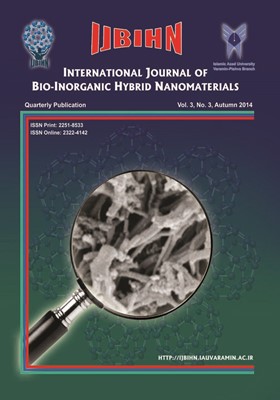-
-
List of Articles
-
Open Access Article
1 - In vitro Investigation of Polymer Coated Magnesium Incorporated by Mesoporous Silica Nanocontainers
-
Open Access Article
2 - Preparation of Sodium Dodecyl Sulfate Modified Pyrrolidine-1-dithiocarboxylic acid Ammonium Coated Magnetite Nanoparticles for Magnetic Solid Phase Extraction of Pb(II) from Water Samples
-
Open Access Article
3 - Detection of Her2 Levels in Cancerous Cells Based on Iron Oxide Nanoparticles
-
Open Access Article
4 - Structural and Morphology Study of ZnO/CuO Powders Prepared by Combination of Sol-gel Auto Combustion and Ultrasonic Irradiation Methods with Different Fuels
-
Open Access Article
5 - Preparation and Rheological Property Evaluation of LDPE/ Zinc Oxide Nanocomposite Films for Food Packaging Application
-
Open Access Article
6 - Preparation and Characterization of ZrO2/TiO2 Nanocomposite under Ultrasonic Irradiation by Sol-gel Route
-
Open Access Article
7 - Co-precipitation Synthesis of Zinc Oxide (ZnO) Nanoparticles by Zinc Nitrate Precursor
-
Open Access Article
8 - Effects of Furnace and Inlet Gas Mixture Temperature on Growing Carbon Nanotube in a CVD Reactor
-
The rights to this website are owned by the Raimag Press Management System.
Copyright © 2021-2025







